8 days Northern Tibet Authentic Cultural Tour
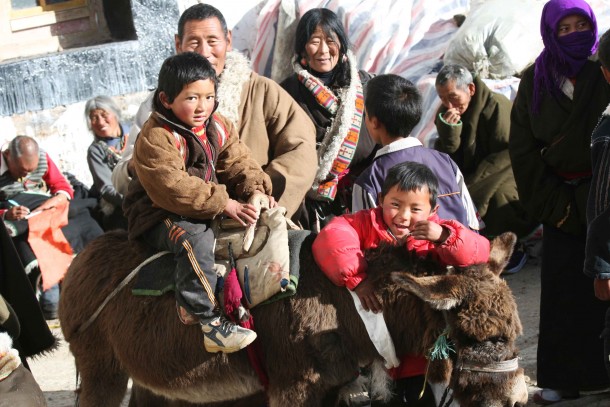
Amdo Nomad Family
DAY 01. ARRIVAL AT XINING
At your arrival our local guide and driver will pick up you and transfer to the hotel in Xining.
Xining City is not in a Tibetan Autonomous Prefecture. There are approximately 120,000 Tibetans in Xining, which is just over 5% of the total Xining City population. Xining City covers the Xining city limits as well as the 3 surrounding counties of Datong, Huangzhong and Huangyuan. Overnight in Xining local hotel
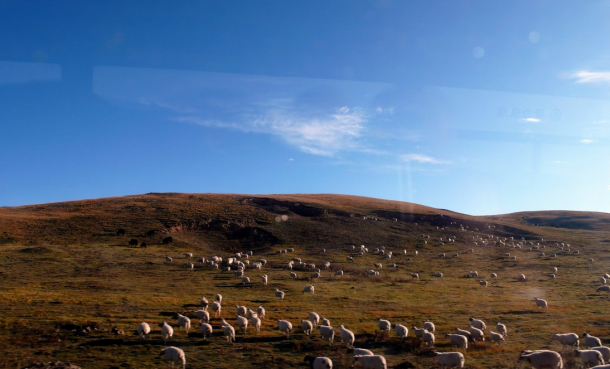
Amdo Rebgong Grassland
DAY 02. XINING– SHAQON—REBKHONG (HOME STAY IN YOGI’S VILLAGE)
Today our nomad adventure in Amdo begins from here, first we will visit Shakyong Monastery, one of four important monasteries in Northern Amdo. Also where the Gelupa tradition’s founder –The Great Tsongkapa studied here from 7 to 16 years old. Overnight in local Hotel
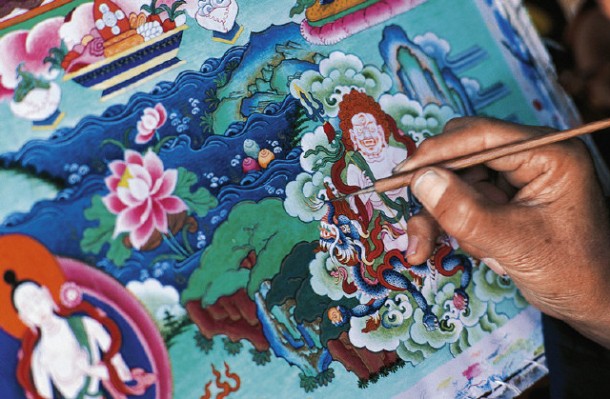
Tibetan Artist Painting Thangka in Labrang
DAY 03. REBKHONG EXCURSION
We will explore the most beautiful monastery in Amdo, Sankheshon, known as the cradle of Tibetan artists. Rebkhong is famous for its Thangka artists. Thangkhas are finely detailed Buddhist religious paintings. Take one home for a souvenir! Visit Sangkeshong monastery, stay in the village and experience the lifestyle of local Tibetan artists.
Rebkong is famous for its Tibetan traditional arts and cultural preservation. There are several monasteries and villages scattering around the Rongwu town which is home to hundreds of artist. The most well-known villages and monasteries are Sanggeshung Yago and Sanggeshung Mago (upper and lower Wutun), Gomar Gompa, Nyamtok village.etc. If you are interested in learning Tibetan culture and Tibetan traditional arts, Rebkong is one of most recommended region. Almost every house turn into artist’s studio. These unofficial school of art are inherited from 18th century. Many of the Tibetan arts you have seen in Amdo are produced by the masters of Rebkong region.
Afternoon leave for Chugya village, live with local yogis and learn more about Tibetan Buddhist and lifestyle of Tibetans in the area. Overnight Family stay
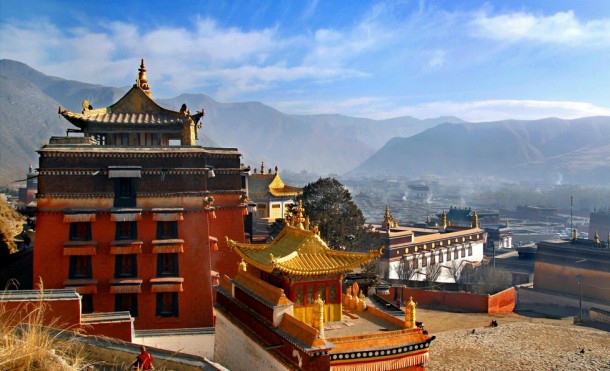
A corner of Labrang monastery
DAY 04. REBKHONG — LABRANG
After a short exploration of the town then we will head to Labrang monastery, it is one of the six largest monasteries in Tibet. Labrang monastery houses nearly 2000 monks. The monastery is founded in 1709 by The First Jamyang Gyapa Ngawang Tsondru (1648-1721) who studied at Drepung Monastery in Lhasa. In his age of 53 to 60, he was the abbot of Drepung Gomang monastery in Lhasa. During his study in Lhasa, he received the title “Gamyang Gyapa” (laughing Manjushri), when a statue of Manjushiri(Tib: Jamyang) laughed at his prostrations in the Manjushiri temple in Lhasa. Jamyang Gyapa’s later reincarnations become the abbot of Labrang Monastery since then, his reincarnations are superseded by H.H The Dailai Lama and Panchen Lama, the two highest ranks of Lama in Tibetan Buddhism. Once he returns to Labrang, he founded the great Monastery of Labrang. This monastery is well-known for its teaching tradition. Monks and lamas from all over Tibet have come to Labrang to study Buddhist philosophy, including the Panchen Lama. This monastery is more than just a home for monks, it is in fact a philosophical center for Tibet. Astrology, medicine, architecture, poetry, linguistics, and many other topics are all taught here. Overnight at hotel
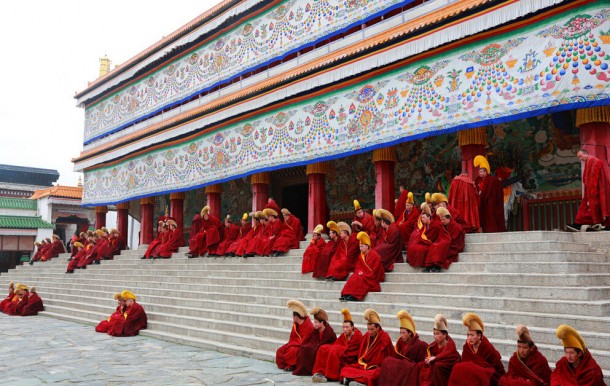
In front of Labrang monastery assembly hall
DAY 05. LABRANG–SOKDZONG
Today we will drive to Sokdzong, a nomadic region where we experience the authentic nomadic culture. It is a native Mongolian town that deeply influenced by the Tibetan culture and Buddhist practices, these Mongolians were left behind from the armies of Genghiz Khan. Around the town of Sokdzong, these Tibetan speaking Mongolians still thrive. We will visit Mongolian families who live in warm Mongolian yurts, which are traditional circular portable homes. Overnight in nomadic family
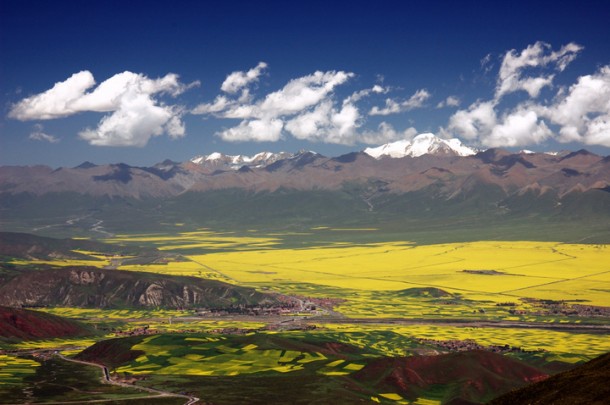
Sokdzong landscapes – home of Mongolians in Tibet
DAY 06. SOKDZONG—CHABCHA
Today we will drive to Chabcha, you will never bore the drive with beautiful nomadic sceneries and alpine valley of the Tibetan plateau, en route visit Hor Mani stone pile, stay overnight in Chabcha. Overnight in Hotel
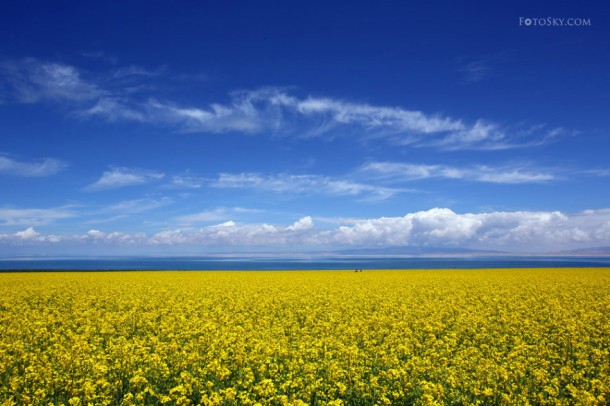
Qinghai Kokonor Lake
DAY 07. CHABCHA–KOKONORE LAKE –XINING
Today we will drive back to Xining and en route visit Kokonore Lake, Qinghai Lake is on the top 5 most beautiful lakes in China. The following photo is taken in the Island of the lake which is in the center of the lake, Qinghai Lake (Tib Tsongongpo, Mogol Lake Kokonor) is at an elevation of 3200m. The Qinghai Province named after the lake. It is the largest lake in all of China and largest salt lake in Asia. Qinghai Lake is regarded as holy by Tibetans and Mongolians and this is also the sea offering site for Penchen Lama. You can see sea offering site at the south shore of the lake, the average depth of the Qinghai Lake is 25m and the deepest area goes down to 80m. The perimeter of the lake is 365m. After lunch, we drive back to Xining. Overnight in local Hotel
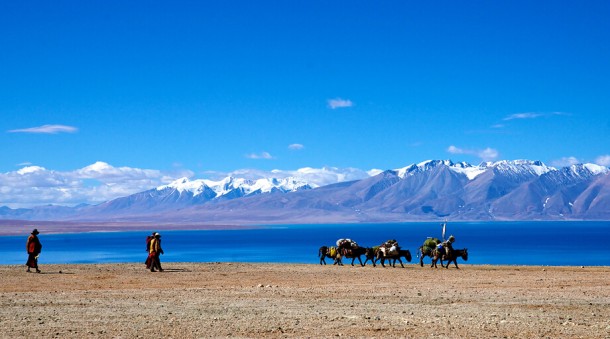
View of Kokonor lake
DAY 08. SEND OFF TO THE AIRPORT OR TRAIN STATION AND END THE TOUR.
Today our guide and driver will send you off to the airport/train station and it is time to say good bye to your guide and driver that accompanied you for the past week long travel.
Tour Cost Includes:
– Private Transportation with experiences local driver;
– Accommodation as specified in the itinerary;
– Knowledgeable local Tibetan tour guide;
– Breakfasts at the hotels nights;
– Airport/train station pick up and send off;
– All entrance ticket fees based on the above itinerary;
– Meals and lodging of the guide and driver;
Tour Cost Excludes:
– Lunches and dinners;
– Flight or train tickets in/out of Xining (If you need help for the ticket booking, then please let us know and we can book the flight and train tickets for you;
– Personal expenses like laundry, alcohol or gift shopping;
– Gratuities for the guide and driver;
Recent Posts
The 7 Best Ways to Enjoy Tibet Tours in Winter
Winter Special in Tibet
Why Visit Tibet in Winter
All Categories
- About Tibet
- book a Tibet tour
- Buddhism Practice
- Budget Tour
- China-Tibet Train
- Customized Tibet tour
- Historical Sites
- Hot Springs in Tibet
- News
- Photography in Tibet
- Tibet attraction
- Tibet Group Visa
- Tibet Motorcycle Tour
- Tibet Small Group Tours
- Tibet Tours and Tibetan Tour Guide
- Tibet Train
- Tibet Travel FAQs
- Tibet Travel Information
- Tibet Travel News
- Tibet Travel Permit Update
- Tibet Travel Prices Rises
- Tibet Trek
- Tibet Trekking Tour
- Tibet weather and climate
- Tibet Wildlife animals
- Tibet Winter Tour
- Tibetan Buddhism
- Tibetan Cultural Features
- Tibetan Culture and Poeple
- Tibetan Festivals
- What to see in Tibet



